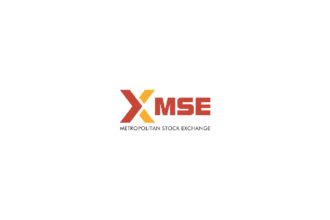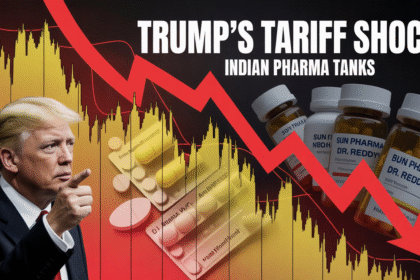The unlisted share price of the Metropolitan Stock Exchange of India (MSEI) has surged from ₹3 to ₹10-11. This growth has caught the attention of market participants, especially after MSEI successfully raised ₹238 crore via private placements. This fundraising involved major market players like Groww, Zerodha, Share India, and Securocrop Securities. The shares were issued at just ₹2 each, with a ₹1 face value and a ₹1 premium, signaling strong backing from established industry players.
MSEI has also recently received SEBI’s in-principle approval to launch an SME trading platform. This marks a step forward in expanding its service offerings and attracting more trading activity.
The buzz around MSEI doesn’t stop there. Speculation is rife about the potential revival of the SX40 index and the introduction of Futures and Options (F&O) trading on the platform. For traders, this could mean an exciting new opportunity: three weekly expiry sessions instead of the current two, especially following SEBI’s recent restrictions limiting weekly expiries to one per exchange. If implemented, MSEI’s entry into this space could redefine trading patterns in India.
Purpose of Fundraising
– Upgrading MSEI’s technology systems to make trading faster and more efficient.
– Expanding its operations and reaching more traders and investors.
– Boosting liquidity and increasing trading volumes on the exchange.
Background of MSEI
MSEI was initially launched in 2008 under the name MCX-SX. It was led by Jignesh Shah and his team. However, its journey took a drastic turn after the NSEL scam. Ownership shifted to a group of institutional investors, including big banks like SBI, HDFC Bank, and PNB. Well-known investors like Rakesh Jhunjhunwala and Radhakishan Damani also supported the exchange in its early days.
Despite these strong backers, MSEI struggled to attract enough trading activity. This lack of trading caused its net worth to decline. In 2022, the chairman of MSEI wrote to SEBI warning that the exchange could shut down if its net worth fell below Rs 100 crore.
Impact of the NSEL Crisis
The National Spot Exchange Limited (NSEL) crisis, which began in 2013, was a major financial scandal that severely affected MSE.
NSEL was supposed to allow only spot trading, but it illegally facilitated forward contracts, letting traders use the platform as a way to borrow money without proper collateral. This led to a massive default of Rs 5,500 crore owed to around 13,000 investors. When NSEL stopped operations in July 2013, it was discovered that many of the commodities traded didn’t even exist in their warehouses. Only Rs 92 crore was recovered initially.
As investor confidence plummeted, MSEI saw a steep decline in trading activity. This was a major blow, especially as it was already competing against well-established players like NSE and BSE.
Even with investments from big banks and financial institutions, MSEI couldn’t fully recover from the NSEL crisis. The exchange failed to generate enough trading activity, which led to further losses. By 2022, its chairman warned that if the net worth fell below Rs 100 crore, the exchange would have to shut down.
The NSEL crisis left a lasting impact, not just on Shah’s businesses but also on the broader financial industry. Recovery was slow, and the scandal created a lasting trust deficit for any exchange linked to Shah.
Today, MSEI still has a stock exchange license and is working hard to rebuild its reputation. With fresh investments and support from regulators, the exchange is trying to make a comeback. However, overcoming the shadow of the NSEL crisis remains one of its biggest challenges.
Can MSEI Challenge the Giants?
MSEI is competing with established giants like NSE and BSE. However, this is no small feat. Attracting a good trading volume is challenging for a new exchange. Building credibility and gaining traction in the market will require a considerable gestation period, likely 3-5 years. Even the BSE, with its long history, finds it tough to compete with NSE in certain segments, particularly the lucrative F&O markets.
Opportunities That Could Drive MSEI’s Growth
1. New stakeholders like Share India bring a wealth of experience in market-making, particularly for indices like BSE Bankex and Sensex Futures. This expertise could help MSEI design attractive trading products and strategies.
2. The potential relaunch of the SX40 Index as a benchmark for F&O contracts could attract interest from traders and investors, offering them more diversified trading options.
3. To entice brokers and traders, MSEI has minimal or zero transaction and membership fees. This cost advantage could make MSEI an attractive alternative to its competitors.
4. MSEI could focus on increasing its presence in currency trading, an area where it already holds some expertise. This segment has growth potential and could provide the exchange with a steady stream of revenue.
5. MSEI is currently involved in an ₹856 crore case against NSE. If the ruling goes in MSEI’s favor, the exchange would receive a good financial boost, enabling it to invest further in its operations and infrastructure.
6. Advanced infrastructure and tech-driven leadership for faster trading.
7. The exchange’s list of stakeholders includes reputed entities like MCX, Radhakishan Damani, and several prominent banks. This backing not only boosts its credibility but also provides support to its operations.
8. If MSEI successfully executes its plans, it could mirror the success story of the BSE, which turned around its fortunes and delivered good returns to investors. MSEI’s journey, while challenging, holds the potential for similar outcomes over a 3-5 year horizon.
This could very well mark the beginning of a new era for traders and investors in India. The question now is: Can MSEI rise to the challenge and carve a space for itself in the highly competitive world of stock exchanges?







